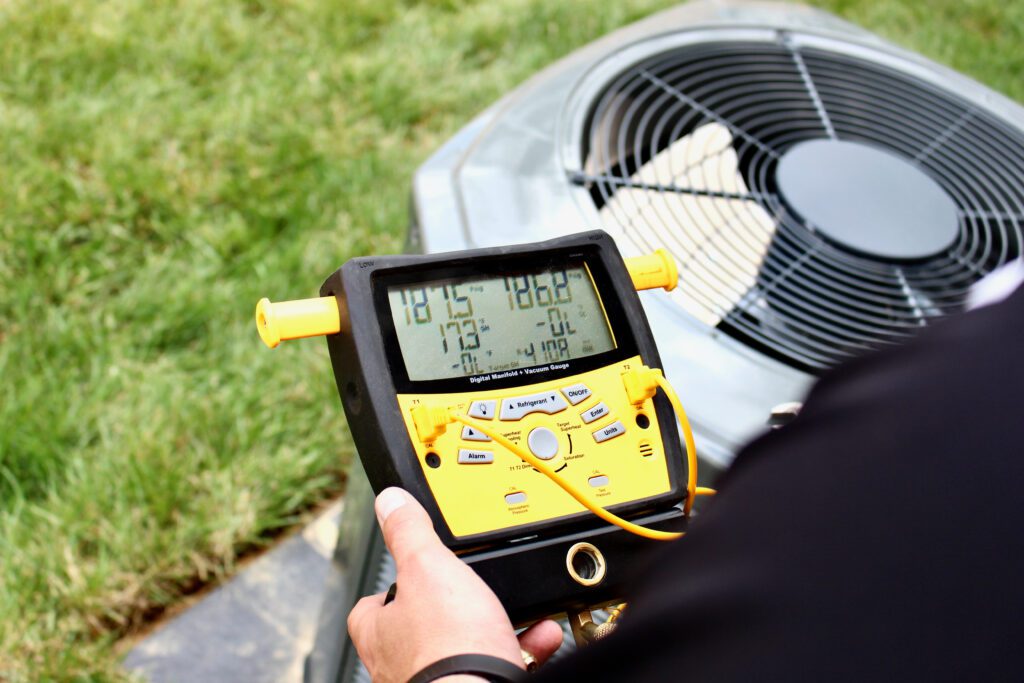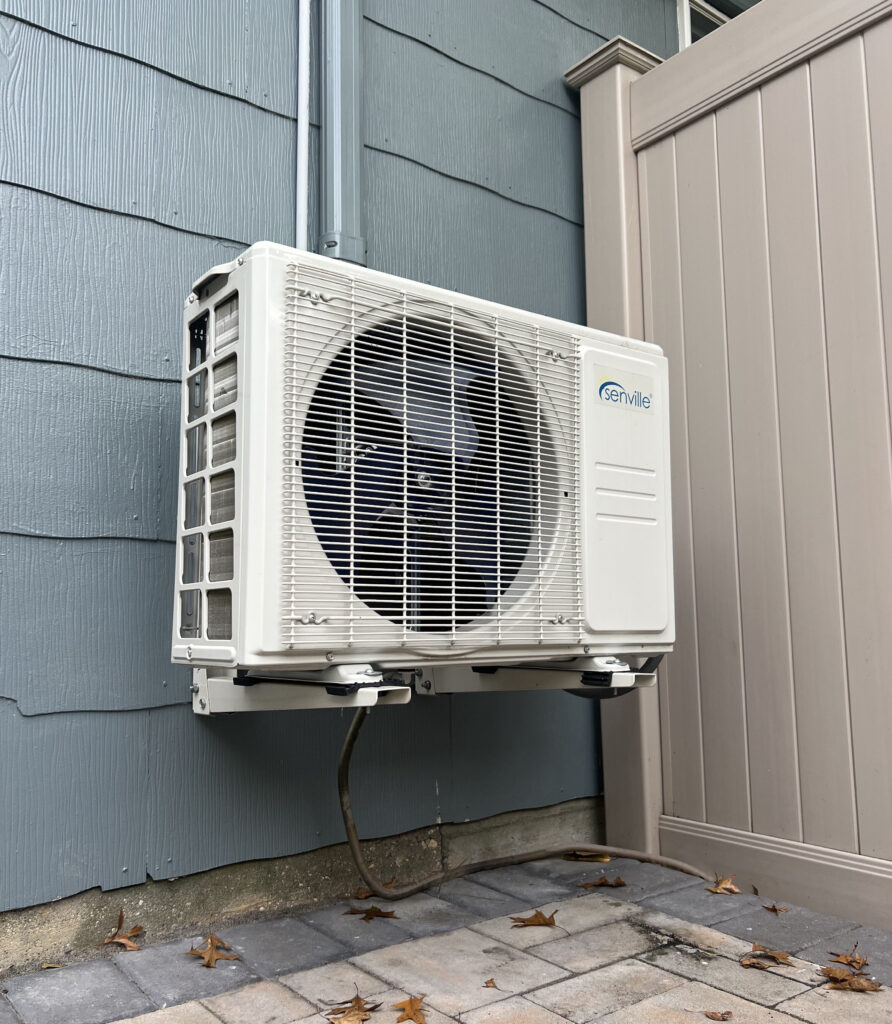Generous New York State incentives can remove some or all of the cost of switching to a central heat pump.

While the opportunity is clear, the prospect of upgrading New York State homes with central heat pumps rests largely on the cost to homeowners. Those costs—and the potential benefits—depend on the size (i.e. capacity) of the heat pump and the nature of the retrofit.
A heat pump will cost a little more than a similarly sized AC but offers lots of benefits
New York State homeowners could replace a failed or aging central AC with a like-size central heat pump—one with the same tonnage or BTUs—to meet their cooling needs, with the bonus of some additional heating capacity. For some homes in New York City and Long Island (Climate Zone 4), a heat pump with the same capacity as the old AC might even be enough to meet all heating needs.
While heat pumps are more expensive to buy and install than ACs, a $2,000 federal IRA tax credit for eligible ENERGY STAR cold-climate heat pumps applies to any size heat pump and will offset some of the cost. The equipment and installation of a typical 3-ton cold-climate heat pump might cost about $1,000 more than a similarly sized central AC, as noted in Table 2 below.3
Table 2
It costs roughly $1,000 more to pick a cold-climate heat pump instead of a central AC for cooling. Source: ACEEE 2024 and EIA 2023
| Cooling system type (3-ton) | Estimated installed cost* (Equipment and installation) |
|---|---|
| Traditional central air conditioner | $5,500 – $5,700 |
| Cold-climate air source heat pump (including -$2,000 IRA incentives) | $6,600 – $6,900 |
| Extra cost for a heat pump | +$1,100 – $1,200 |
This drop-in central heat pump wouldn’t likely require other building upgrades, like envelope, duct or electric panel improvements—though efficiency work will always improve system performance. And the extra cost of the heat pump brings additional benefits, including:
- More efficient cooling and lower summer utility bills;
- New, highly efficient electric heating during spring, fall and warmer winter days;
- A more resilient home, with a second heating system and reduced urgency when an oil or gas furnace fails.
For most New York State homes, a heat pump with the same capacity as the old AC won’t meet full winter heating demand. When the existing oil or gas furnace fails, that central heat pump could be upgraded to full heating through targeted building improvements and additional central or ductless mini-split heat pumps. But a more forward-looking—and potentially more cost-effective—approach will be to move to just one system for year-round heating and cooling by weatherizing the home and installing a larger heat pump.
It’s costly to maintain and replace two separate heating and cooling systems
Homes primed for this AC-to-heat-pump opportunity use a central AC in summer and a furnace in winter. The costs of installing, operating, maintaining and eventually replacing these two different systems add up. If a homeowner is considering making the leap to a fully sized central heat pump, they should compare the cost of a heat pump against the combined cost of these two systems that the heat pump will replace.
In a cold climate like New York State, the combined cost to replace a central AC and a typical gas or oil furnace ranges from about $9,000 to $11,000.4 While costs will vary depending on a home’s specific circumstances, this range is reasonably representative of what a typical 1,750-square-foot New York homeowner might pay to replace both systems. This combined system replacement cost allows homeowners and policymakers to better see how central heat pumps stack up.
Big incentives can make it affordable to install a fully-sized heat pump instead
When New York homeowners make the leap to central heat pumps sized for full heating, upfront costs are often higher due to a larger heat pump and the potential ancillary envelope retrofits, duct improvements or electric upgrades. We estimate that before incentives, typical project costs for a fully sized ducted heat pump retrofit in New York range from about $5,000 to $6,000 per ton, including equipment, installation and ancillary upgrades.5
But enormous New York State incentives kick in when heat pumps are fully sized to meet all of a home’s heating needs.6 These incentives offset the costs of equipment and related retrofit work, and they can be stacked with federal incentives to eliminate much or all of the additional cost—especially for low-to-moderate (LMI) New Yorkers.
While exact incentives vary by local utility, Figure 4 offers a general breakdown of total project costs in New York State—including equipment and retrofit work—to install a fully-sized heat pump in a typical 1,750 square-foot home after incentives, and how those costs might compare to traditional heating and cooling replacements across different income brackets.
Note: This storytelling graphic is best viewed on a laptop or desktop.
Figure 4

Winter heating bills may vary depending on current fuel source
How and when to make the leap to a fully-sized electric heat pump may also depend on a homeowner’s utility bills. Summer cooling costs will be similar or lower, but changes to winter heating costs will depend on the price of the home’s current heating fuel.

Heat pumps are incredibly efficient compared to any other space heating alternative. They use less energy to heat the same space as fossil fuels, and that efficiency can sometimes—but not always—make up for any difference in the price of heating fuels.
For homes currently heating with expensive delivered fuels like oil and propane, switching to heat pumps will save money on winter heating bills right away. Almost 20 percent of homes statewide, and 26 percent in Climate Zone 4, use fuel oil for heating.8 For example, an AC-to-heat-pump swap may be attractive on Long Island, where it costs about 1.5 times more per kBTU to heat with fuel oil (about 4 cents per kBtu) than with a heat pump (about 2.7 cents per kBtu).9
And for homes heating with an electric resistance heater—which is more common in northern regions of the state—heat pump utility costs will be much lower because heat pumps use two to three times less electricity than a resistance heater.
On the other hand, for homes switching from natural gas to heat pumps, low residential gas prices in New York State could mean that the cost of winter heating may increase in some homes without careful planning. Heating with natural gas can cost 10 to 40 percent less per kBtu than heating with a heat pump, but it varies depending on the utility region of the state.10 For example, in New York City, heating with residential natural gas costs about 2.7 cents per kBtu, while heating with a cold-climate heat pump costs about 3.3 cents per kBtu—a 20 percent difference. In Rochester, that difference is nearly 38 percent, where heating with gas costs roughly 1.2 cents per kBtu, while heating with a heat pump costs about 1.9 cents per kBtu.
The possibility of increased heating costs is a particularly important consideration for lower-income homes, where residents are likely already energy-burdened. Policy and program design must navigate these risks and ensure equitable electrification for all New Yorkers.
One potential way to navigate this challenge is to pair AC-to-heat-pump swaps with impactful building improvements that lower heating demand. Envelope upgrades and proper heat pump sizing can mitigate and even eliminate any potential utility cost gap. A recent NYSERDA analysis found that basic shell upgrades in single-family homes can reduce space heating loads by 27 percent, and the EPA estimates typical homes in New York’s climate zones could save 16 to 18 percent on energy bills with air sealing and insulation.
